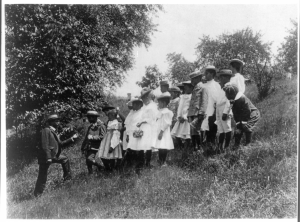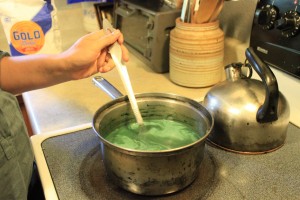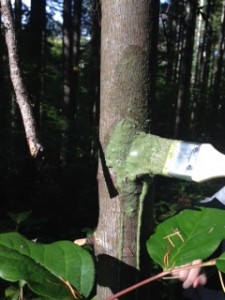The crisp air of the mountain fills my lungs as I make my way down to the desolate creek. Pushing through the thick water-laden ferns, an awareness of freedom that is the outdoors washes over me. Picking up a branch covered with a myriad of lichen species, I am overcome by a feeling of satisfaction and peace. How fortunate am I to discover tranquility. As I sat with the lichens listening to the trickling creek it occurred to me that the only way lichen restoration was possible was if people cared. Without passionate individuals willing and wanting to dedicate their time to the noblest of causes, restoration was not a possibility.
Hello!! Welcome to my blog about lichen restoration! When assigned the task of researching lichen restoration there were many routes to explore. Join me on a leg of this journey as my classmates and I at the Evergreen State College delve into the abyss that is extreme excitement about science. We have spent the better part of the semester learning and brainstorming about the great task of restoration.
Giving a great deal of thought to how I myself had ended up in a love affair with lichens I realized the correlation between restoration of a species and restoration of the human spirit. We live in a world where there is no shortage of people seeking a path, needing satisfaction and peace. For a moment clarity was my friend and I decided that education was the underlying foundation to our restoration solution.
So whats next?
The Childre n and Nature Network has a long list of the benefits of what they call “Vitamin G”. Ranging from decreasing the symptoms of ADD to enhancing cognitive abilities the list gives an eye opening account of the possibilities held within nature. Alongside of children there are many health benefits associated with elderly and the environment. A study done through the University of Rochester showed that a connection with nature makes you “feel more alive” and decreases your chances of illness. These possib
n and Nature Network has a long list of the benefits of what they call “Vitamin G”. Ranging from decreasing the symptoms of ADD to enhancing cognitive abilities the list gives an eye opening account of the possibilities held within nature. Alongside of children there are many health benefits associated with elderly and the environment. A study done through the University of Rochester showed that a connection with nature makes you “feel more alive” and decreases your chances of illness. These possib
ilities do not just end with children and the elderly, everyone can be positively affected. An article in the American Journal of Community Psychology suggests that activities in open spaces are associated with greater social integration and stronger social networks among neighbours (Kuo, Sullivan, Coley and Brunson, 1998). This, coupled with the chance of restoration is not only an interesting idea, it’s a movement that can spark change and opportunity.
Realizing the importance of education, the only plausible path was to brainstorm and design a lesson plan that could be implemented into classrooms, ca mps, and community. The fact that we as Evergreen students have the opportunity to take a class about lichens and bryophytes is actually a privilege and a rarity. Much like the symbiosis of a lichen it would be mutually beneficial for us as students to lead walks throughout our community educating everyone about the wonders in our own backyards. The community would learn to sight-identify important species and students would reinforce their knowledge by teaching others. According to John Nestojko, a researcher in psychology at Washington University in St. Louis, “When compared to learners expecting a test, learners expecting to teach recalled more material correctly, they organized their recall more effectively and they had better memory for especially important information.” In the words of the ever inspiring rapper Rampage, it’s time to take it to the streets.
mps, and community. The fact that we as Evergreen students have the opportunity to take a class about lichens and bryophytes is actually a privilege and a rarity. Much like the symbiosis of a lichen it would be mutually beneficial for us as students to lead walks throughout our community educating everyone about the wonders in our own backyards. The community would learn to sight-identify important species and students would reinforce their knowledge by teaching others. According to John Nestojko, a researcher in psychology at Washington University in St. Louis, “When compared to learners expecting a test, learners expecting to teach recalled more material correctly, they organized their recall more effectively and they had better memory for especially important information.” In the words of the ever inspiring rapper Rampage, it’s time to take it to the streets.
This semester we also learned about the method of FIA plotting and how it opens the doors for an average community member with no background in biology to go into the field and record valuable data on ground cover and species richness. Allowing youth access to this type of data collection would increase the amount of information we have at any given area while developing a skill set on an individual level. Teenagers with no positive outlet could find themselves enthralled by what the prairies have to offer and the prairies would reap the benefits.
After our group atte mpted to make our own lichen paint based off of Formula 29, it became increasingly certain
mpted to make our own lichen paint based off of Formula 29, it became increasingly certain that creating an educational program was not only doable, it had the potential of being a great success. What kind of person doesn’t want to make a concoction, boil it down and crush lichens into it and then paint it on trees?! Once all the mixing, chanting, and ooohhhing and ahhhhhhing have been completed allow your mixture to cool. Now would be an excellent time to go over the different substrates you could potentially apply your paint to. What kinds of lichens grow on each substrate? Which substrate would your choice lichens thrive on best? Once the paint has cooled enough transfer to a container and prepare for the epic adventure that is painting the world with the awesomeness of lichens!!
that creating an educational program was not only doable, it had the potential of being a great success. What kind of person doesn’t want to make a concoction, boil it down and crush lichens into it and then paint it on trees?! Once all the mixing, chanting, and ooohhhing and ahhhhhhing have been completed allow your mixture to cool. Now would be an excellent time to go over the different substrates you could potentially apply your paint to. What kinds of lichens grow on each substrate? Which substrate would your choice lichens thrive on best? Once the paint has cooled enough transfer to a container and prepare for the epic adventure that is painting the world with the awesomeness of lichens!!
Alright, alright lichens are important, we get it. Now let’s wrap it up!!
There are several organizations in the immediate area like ECOS dedicated to environmental education. Continuing the idea of community connection we could create a lesson plan outlining the significance of lichens, why restoration is crucial, and what we can do to save them. The US forest service even has a really great resource for teachers to find lesson plans and share different ideas regarding lichens. If you are interested in other resources for lesson plans and educational materials please check out some of the links at the bottom of my blog!
By creating a curriculum that shows the importance of restoration of lichens, giving children and community members the skill set to search and record data using FIA plotting, and having them do a kick-ass project that is fun and informative, we are bringing science to the community. This coupled with possible lichen walks and presentations is the beginning of formulating change and opportunity and giving both species a better chance at a healthier life!
Additional Educational Resources
Resources
Kuo, F. E., Sullivan, W. C., Coley, L. Brunson, L., 1998. Fertile ground for community: Inner-city neighborhood common spaces. American Journal of Community Psychology, 26, pp 823-851.
Bernstein, K. Brown, L. Mastella, M. Gagne, 2010. Spending time in nature makes people feel more alive, University of Rochester.
Everding, 2014. Students learn more if they’ll need to teach others, Washington University in St. Louis.
“Magnificent Lichen Growth Formulas.” Magnificent Lichen Growth Formulas. <http://lichenlovers.org/lichen_growth_formula.phtml>.
Lichens and Air Quality Monitoring. Lichens and air quality monitoring..USDA Forest Service

Leave a Reply